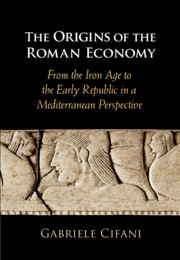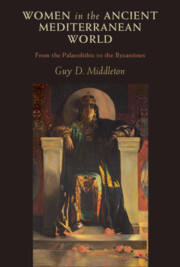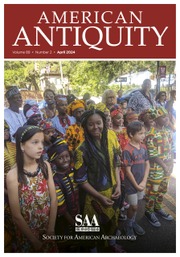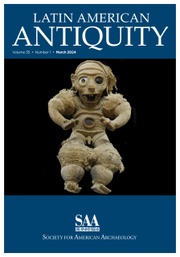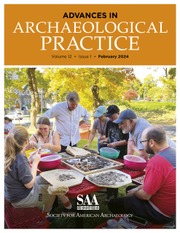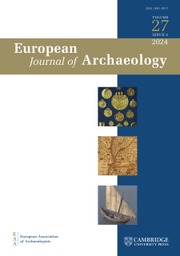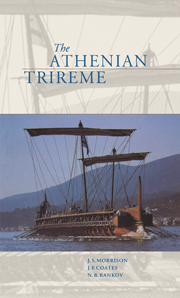Shipsheds of the Ancient Mediterranean
$160.00 (C)
- Authors:
- David Blackman, Centre for the Study of Ancient Documents, University of Oxford
- Boris Rankov, Royal Holloway, University of London
- Date Published: February 2014
- availability: Available
- format: Hardback
- isbn: 9781107001336
$
160.00
(C)
Hardback
Other available formats:
Paperback
Looking for an examination copy?
This title is not currently available for examination. However, if you are interested in the title for your course we can consider offering an examination copy. To register your interest please contact [email protected] providing details of the course you are teaching.
-
This is the first detailed and comprehensive study of the shipshed complexes which housed the great navies of the Greco-Roman world, including Athens and Carthage. These complexes represented some of the largest and most expensive building projects of antiquity, and the volume provides a comprehensive survey of the archaeological and literary evidence. It explains how the buildings were carefully designed to keep warships dry and out of reach of shipworm, whilst enabling them to be launched quickly, easily and safely when required. It also serves as a handbook for archaeologists who may excavate such buildings, which are often difficult to identify and interpret. The analytical chapters are complemented by a full and detailed catalogue of known sheds, with plans for all the major sites specially drawn for easy comparison. The book thus provides an indispensable guide for all those interested in these buildings and in the maritime infrastructure of the ancient world.
Read more- The first ever comprehensive study of ancient shipsheds
- Provides an essential handbook to archaeologists, enabling them to recognise and understand buildings which have previously been difficult to identify and interpret
- Demonstrates the scale and significance to ancient coastal cities of a building type which has hitherto been neglected as utilitarian
Reviews & endorsements
"Shipsheds [of the Ancient Mediterranean] will surely become the standard work on the subject that everyone will consult for the next few decades or more. Congratulations are due to all who contributed to this ambitious project and its final excellent publication."
William M. Murray, The International Journal of Nautical ArchaeologyCustomer reviews
Not yet reviewed
Be the first to review
Review was not posted due to profanity
×Product details
- Date Published: February 2014
- format: Hardback
- isbn: 9781107001336
- length: 617 pages
- dimensions: 287 x 219 x 34 mm
- weight: 1.9kg
- contains: 212 b/w illus. 3 maps 24 tables
- availability: Available
Table of Contents
1. Introduction David Blackman and Boris Rankov
2. Research and investigation of ancient shipsheds David Blackman
3. Classical and Hellenistic sheds David Blackman
4. Roman shipsheds Boris Rankov
5. The economy of shipshed complexes: Zea, a case study Jari Pakkanen
6. Ships and shipsheds Boris Rankov
7. Slipping and launching Boris Rankov
8. Ramps and substructures David Blackman
9. Roofs and superstructures Henrik Gerding
10. The topography of shipshed complexes and naval dockyards Kalliopi Baika
11. The fortification of shipsheds and naval arsenals Kalliopi Baika
12. Small-scale and rock-cut naval bases Kalliopi Baika
13. Conclusions: not just garages David Blackman and Boris Rankov
Catalogue of shipsheds and miscellanea Kalliopi Baika, David Blackman, Henrik Gerding, Judith McKenzie and Boris Rankov.-
General Resources
Find resources associated with this title
Type Name Unlocked * Format Size Showing of
This title is supported by one or more locked resources. Access to locked resources is granted exclusively by Cambridge University Press to instructors whose faculty status has been verified. To gain access to locked resources, instructors should sign in to or register for a Cambridge user account.
Please use locked resources responsibly and exercise your professional discretion when choosing how you share these materials with your students. Other instructors may wish to use locked resources for assessment purposes and their usefulness is undermined when the source files (for example, solution manuals or test banks) are shared online or via social networks.
Supplementary resources are subject to copyright. Instructors are permitted to view, print or download these resources for use in their teaching, but may not change them or use them for commercial gain.
If you are having problems accessing these resources please contact [email protected].
Sorry, this resource is locked
Please register or sign in to request access. If you are having problems accessing these resources please email [email protected]
Register Sign in» Proceed
You are now leaving the Cambridge University Press website. Your eBook purchase and download will be completed by our partner www.ebooks.com. Please see the permission section of the www.ebooks.com catalogue page for details of the print & copy limits on our eBooks.
Continue ×Are you sure you want to delete your account?
This cannot be undone.
Thank you for your feedback which will help us improve our service.
If you requested a response, we will make sure to get back to you shortly.
×


